

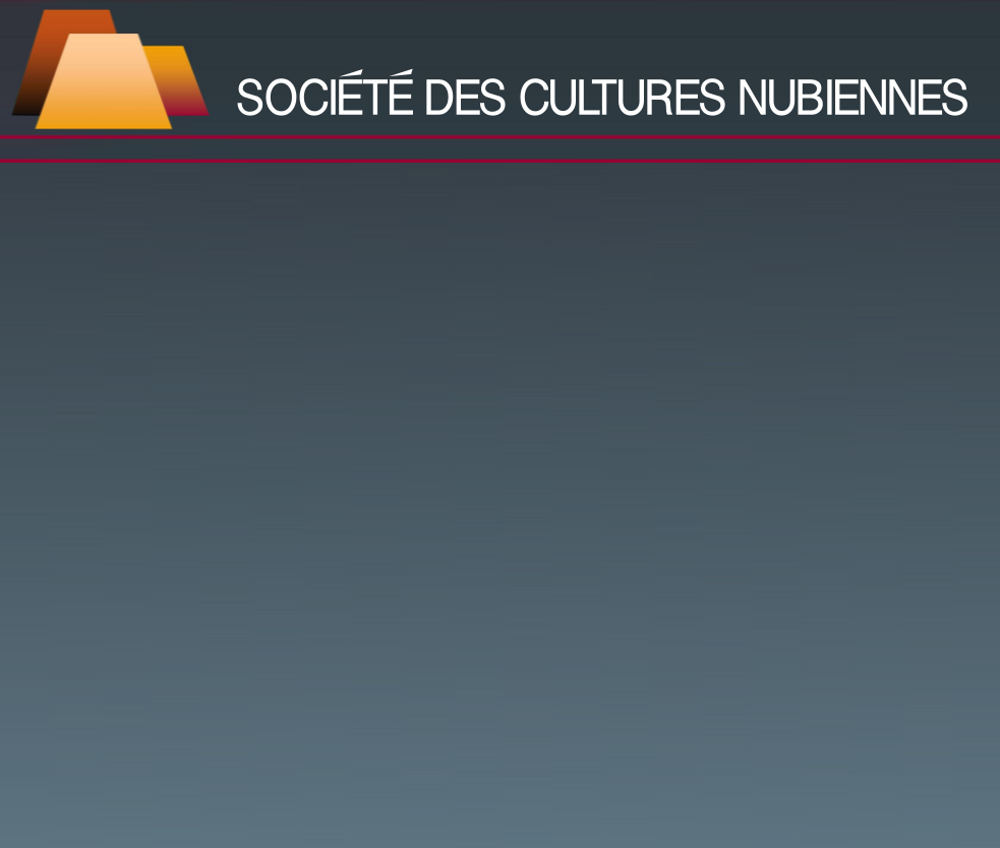
|
NAGA
The site of Naga is located some 130 km to the north east of Khartoum and 30 km from the east bank of the Nile. It is dominated by Jebel Naga.The Frenchmen Frederic Caillaud and Linant de Bellefonds visited the site in 1822. In 1844, the Prussian Richard Lepsius carried out a detailed study.
The environment of Naga is delimited by the Nile and the Atbara rivers, and was a fertile area at the end of the first Millennium BC and during the first centuries AD. On the axis of the 'African Corridor' running south to north and the commercial routes towards the Red Sea, the site is part of the Meroitic urban network. The excavations and the restoration work of the German mission from the Ägyptisches Museum und Papyrussamlung Staatliche Museen zu Berlin (Egyptian Museum, Berlin) have demonstrated the importance of this site. The visitor will be amazed by the cult complex developed under King Natakamani, Queen Amanitore and prince Arikankharor (at about the beginning of the first century AD).
The temple of Apedemak is consecrated to the Meroitic god, which is represented in the form of a lion. He is depicted with three heads and four arms, evoking Indian influences. On the sides of the pylon, the god has a lion head but human arms above his body, an immense serpent emerging from a lotus or acanthus flower. Inside the temple, he is linked to Zeus, the Greek god, or to Serapis, the Alexandrian deity. The external walls show gods such as Amun in the form of a ram (Amani in Meroitic) with the presence of the king, queen and prince richly dressed and decorated with jewellery. On the walls, Apedemak is shown on one side as the god of life with the sign of the ankh and on the other as the god of war holding a standard. This sanctuary includes a single room (or cella), characteristic of the indigenous temples, while Egyptian temples are made up of a sequence of courtyards and rooms harmoniously proportioned, with a spatial relationship between the rooms. The Greco-Roman influences in the architecture and iconography of the religious buildings show economic and cultural contacts with the town of Alexandria and the Mediterranean Basin. Near the temple of Apedemak the kiosk, a masterpiece of Nubian art (from the first century AD), is a singular mixture of Pharaonic and Greco-Roman motifs.
The temple of Amun is one of the cult areas dedicated to this god during the Meroitic period: the sanctuaries of el-Hassa should be mentioned (160 km north of Khartoum) and Dangeil (north of the Atbara river at 380 km from the Sudanese capital). Contemporary to the Apedemak temple, this sanctuary is built on an artificial terrace. It has a dromos lined with rams, pylons, peristyle and hypostyle courts, pronaos and naos that make up the classic parts of an Egyptian temple. The decorative motifs make reference to the genie Hapy and the god Amun to whom the king Natakamani and queen Amanitore make offerings. Perpendicular to this temple, the base of a structure was unearthed in 2004 by the German mission from the Berlin Museum. Near the archaeological remains a well allows the visitor to view the daily life of the herders of sheep, goats, cattle and dromedaries. |
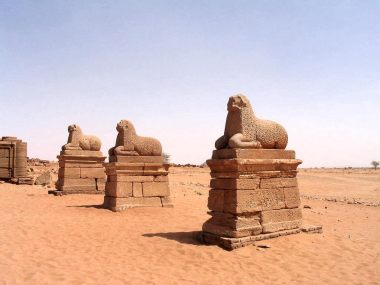 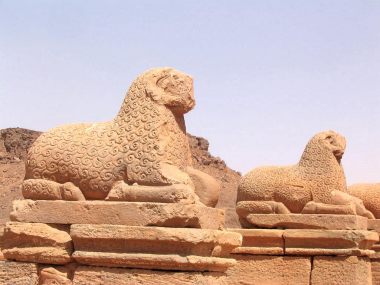 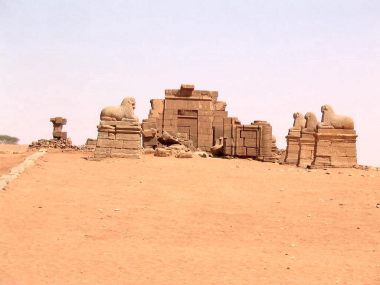 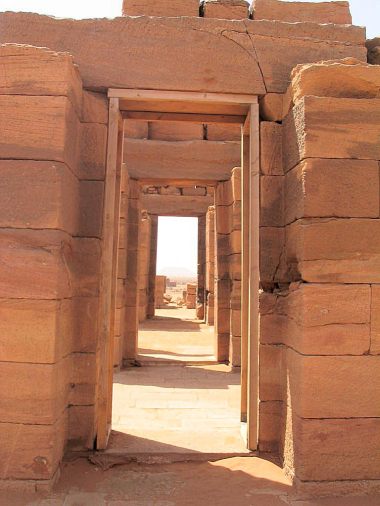 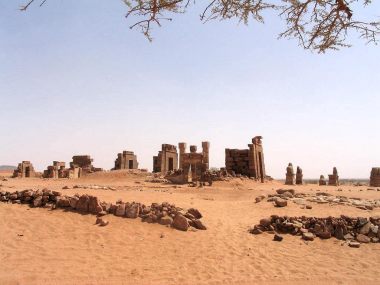 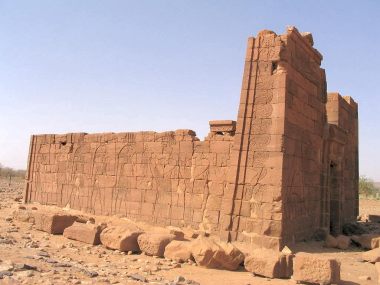 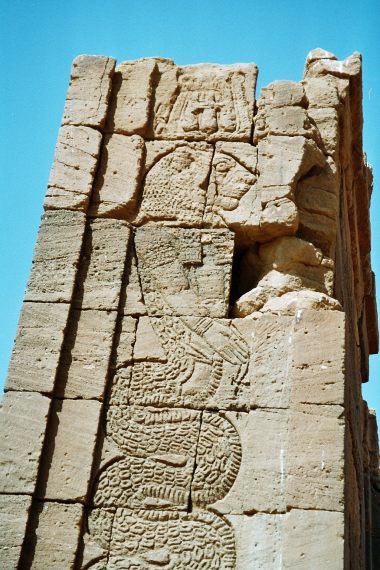 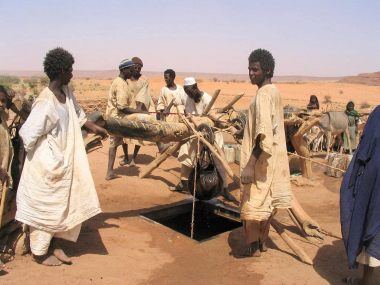 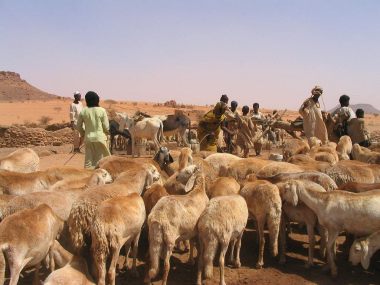 Rams alley before the Amon's temple at Naga / Dromos de béliers précédant le sanctuaire du dieu Amon à Naga
Details of the rams alley at Naga / Détails du dromos de béliers à Naga
Amon's temple at Naga / Temple d'Amon à Naga
Doors of the central corridor inside the Amon's temple of Naga / Portes du couloir central du temple d'Amon de Naga
Lateral view of Amon's temple / Vue latérale du temple d'Amon
Lion's temple (god Apedemak) at Naga / Temple du lion Apédémak à Naga
On one side of the pylon of the temple of Apédémak, bas-relief of the god with a snake tail / Représentation du dieu lion Apédémak (à queue de serpent) sur un coté du pylône d'entrée du sanctuaire à Naga
Naga's well where the animals come to drink / Puits de Naga où viennent s'abreuver les animaux
Cattle of sheeps at Naga / Troupeaux de brebis à Naga
|